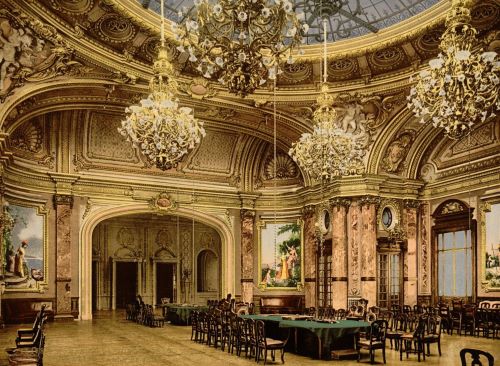

Slot machines have occupied a unique space in American culture for more than a century. From modest beginnings as mechanical novelties in saloons, they evolved into digitally driven entertainment hubs found in casinos, airports, and mobile apps. More than mere diversions, these machines offer a compelling reflection of America’s relationship with leisure, chance, morality, and design.
Their history tells a broader story of industrial growth, legal tensions, visual language, and cultural transformation. Over time, their visual evolution has become an effective showcase of different slot games, reflecting broader shifts in American design and leisure culture.
Industrial Origins and Early Mechanisms
The story begins in San Francisco during the 1890s, where Charles Fey created the Liberty Bell machine. This early invention, made of cast iron and fitted with three mechanical reels, set the precedent for all slot machines that followed. Simple in form yet novel in function, the machine awarded coins for matching symbols and became a staple in bars and cigar shops.
Slot machines mirrored the technological optimism of the late 19th century. Their gears, levers, and coin chutes aligned with a broader American fascination with mechanics and invention. These early devices thrived in urban centers, where growing industrial workforces sought inexpensive amusements during off-hours.
Charles Fey and the Liberty Bell
Fey’s Liberty Bell, introduced in the 1890s, marked the beginning of mechanized gaming in the United States. It was a compact device built with mechanical precision and designed for repeat use in busy urban venues like saloons and cigar shops. Its durable build and straightforward design made it both reliable and instantly engaging to players.
- Three reels: Rotating steel discs that displayed symbols like stars, horseshoes, and bells
- One lever: Pulled to activate the reels, later earning the machine the nickname “one-armed bandit”
- Cast iron body: Protected the internal mechanics while giving the machine a strong visual identity
- Coin slot mechanism: Accepted a coin and triggered the internal gears with minimal user input
- Simple rewards: A matched line of three bells returned the highest prize
This format quickly became a template for future designs. Manufacturers adopted its core mechanics while experimenting with colors, fruit imagery, and enhanced materials that remain recognizable in modern machines.
Commercial Spaces and Early Popularity
Slot machines quickly appeared in bars, barber shops, and tobacco stands. Their simplicity made them easy to use, and their accessibility turned them into common fixtures of public life. A few coins offered long moments of anticipation, making them a popular source of casual entertainment. Their polished steel bodies and bold lettering reflected the industrial design trends of the Gilded Age.
Symbolism and Reels
The symbols used on early slot machine reels were more than decorative. They reflected cultural themes and served practical purposes that helped machines blend into commercial spaces and comply with legal restrictions.
- Liberty Bell: A patriotic image that echoed post-Civil War nationalism and unity
- Bars and 7s: Borrowed from industrial logos and packaging, evoking reliability and mass production
- Fruit symbols: Used to suggest gum flavors, helping manufacturers market machines as candy dispensers to bypass gambling bans
These symbols created a visual language that made early machines both familiar and appealing. They also laid the groundwork for the recurring imagery found in slot games today.
Legal Restrictions and Social Tensions
As slot machines gained popularity, they also attracted attention from lawmakers and reformers. Early 20th-century movements aimed at temperance and public morality viewed them as vices. Many states enacted anti-gambling laws that banned slot machines outright, yet the machines persisted in underground and modified forms.
Moral Campaigns and Reform Movements
Progressive reformers viewed slot machines as symbols of moral decline and social corruption. They argued that these devices encouraged idle behavior and undermined public values, especially in urban areas. In response, many pushed for strict legislation against all forms of coin-operated gaming. Their efforts led to several major outcomes:
- Widespread prohibition: By the 1910s, most U.S. states had banned slot machines outright.
- Creative workarounds: To avoid restrictions, manufacturers redesigned machines to dispense gum or candy rather than coins.
- Legal gray areas: In cities with strong demand, authorities often tolerated machines despite the bans, leading to inconsistent enforcement.
These developments did not eliminate slot machines but forced them into new forms, shaping their evolution for decades to come.
Persistence Through Loopholes
Even during periods of prohibition, slot machine manufacturers found inventive ways to keep their products in circulation. Some redesigned machines to dispense fruit-flavored gum instead of coins, aligning the symbols on the reels with the gum flavors. Others marketed their devices as amusement-only novelties, avoiding direct association with gambling. In certain cases, businesses offered external prizes to winners, allowing them to sidestep legal restrictions. These adaptations helped slot machines remain visible and culturally relevant, even when formal gambling was outlawed.
Nevada and Legalization
A major turning point came in 1931, when Nevada legalized most forms of gambling in an effort to boost its struggling economy during the Great Depression. This legislative shift transformed slot machines from marginal amusements into recognized fixtures of regulated public entertainment.
Casinos in Reno and Las Vegas rapidly adopted them, installing machines in lobbies and main halls to attract both casual players and tourists. Research compiled by the Nevada Legislative Counsel Bureau highlights how the 1931 law empowered local authorities to regulate or prohibit gaming shortly afterward, while the first licenses were immediately issued to Reno-based clubs, including the Northern Club and Owl Club, signaling the dawn of organized, state-regulated gambling.
Several key developments followed:
- Licensing systems: Casino operators were required to obtain formal approval to install and maintain slot machines, establishing the foundation for industry regulation.
- Revenue tracking: The state implemented mechanisms to monitor machine performance and collect taxes, ensuring that gambling activity contributed to public funds.
- Tourism marketing: Las Vegas began promoting slot machines as part of a broader image of luxury, leisure, and modern excitement.
- Machine standardization: Manufacturers adapted to new laws by producing machines that met regulatory guidelines, improving safety and consistency.
- Casino planning: Architects and designers began organizing casino floors around banks of slot machines, recognizing their draw and profitability.
These reforms helped institutionalize slot machines as legitimate entertainment while supporting the economic and cultural rise of Nevada’s gaming industry.
Postwar Expansion and Mass Culture
After World War II, American society entered a period of rapid economic growth. Entertainment industries flourished, and slot machines became more sophisticated in both technology and visual appeal. They reflected the aesthetic of the postwar consumer landscape, with bright lights, chrome finishes, and updated themes.
Casinos modernized their layouts, dedicating entire floors to rows of machines. Manufacturers incorporated flashing lights, sound effects, and curved designs to make the machines visually arresting. This period also saw a shift in audience, with targeted designs created for women, vacationers, and casual players.
The Strip and the Leisure Economy
Las Vegas developed as a leisure destination built around themed resorts, concerts, and gaming floors. Slot machines supported this model by offering constant low-cost play that required no prior experience or strategy.
Cultural Embedding
Slots began to appear in film and literature, often symbolizing luck, fate, or the seductive nature of fortune. They were no longer isolated amusements but cultural icons embedded in the American imagination.
Digital Adaptation and the Contemporary Scene
By the 1980s, slot machines had transitioned from mechanical to electronic formats. Video screens replaced rotating reels, and microprocessors controlled everything from symbol sequences to lighting and sounds. With digital infrastructure in place, the range of themes and gameplay options expanded rapidly.
From Screens to Stories
As slot machines evolved into digital formats, they began incorporating narrative elements to enhance player engagement. Modern games often draw inspiration from familiar story frameworks and popular media. These themes do more than add visual appeal; they introduce structure, characters, and settings that turn individual plays into connected experiences.
Common narrative sources include
- Mythology: Featuring gods, quests, and legendary figures from classical traditions
- Cinema: Adaptations based on popular film franchises with recognizable storylines
- Pop culture: Incorporating television characters, musical icons, and trending personalities
These story-driven designs reflect changes in digital entertainment. Interactivity now works alongside storytelling to create experiences that feel more immersive and intentional.
Online and Social Play
The rise of the internet led to browser-based and mobile platforms for slot-style games. These retain the visual and interactive features of casino models but are often structured for casual or social play rather than monetary stakes. They bring the aesthetic of slots to a wider, more diversified audience.
Memory, Play, and the Philosophy of Luck
Slot machines also engage deeper philosophical questions about chance, repetition, and control. Their operation simulates randomness but is guided by programmed probabilities. Players are drawn to the illusion of agency, pressing buttons or pulling levers with expectations rooted in ritual and belief.
Pattern Seeking and Repetition
Humans are wired to seek patterns, and slots reinforce this impulse through visual and auditory cues. Repetitive spins, flashing lights, and near-wins all simulate control over outcomes that remain fundamentally unpredictable.
Cultural Role of Chance
In American society, where effort and reward are closely linked, slot machines offer a contrasting idea: that luck can bypass labor. This contradiction helps explain their lasting fascination.
Conclusion
The history of slot machines reflects broader themes in American society, including industrial innovation, moral reform, visual culture, and technological change. From their early days as cast-iron mechanical devices to their modern presence as digital simulations, slot machines have consistently served as instruments of amusement and expressions of cultural values.
They continue to occupy a visible place in public life, offering insight into how American society interprets chance, fairness, and the pursuit of pleasure. Even in their simplest forms, these machines reveal lasting ideas about entertainment, aspiration, and the structure of modern leisure.


